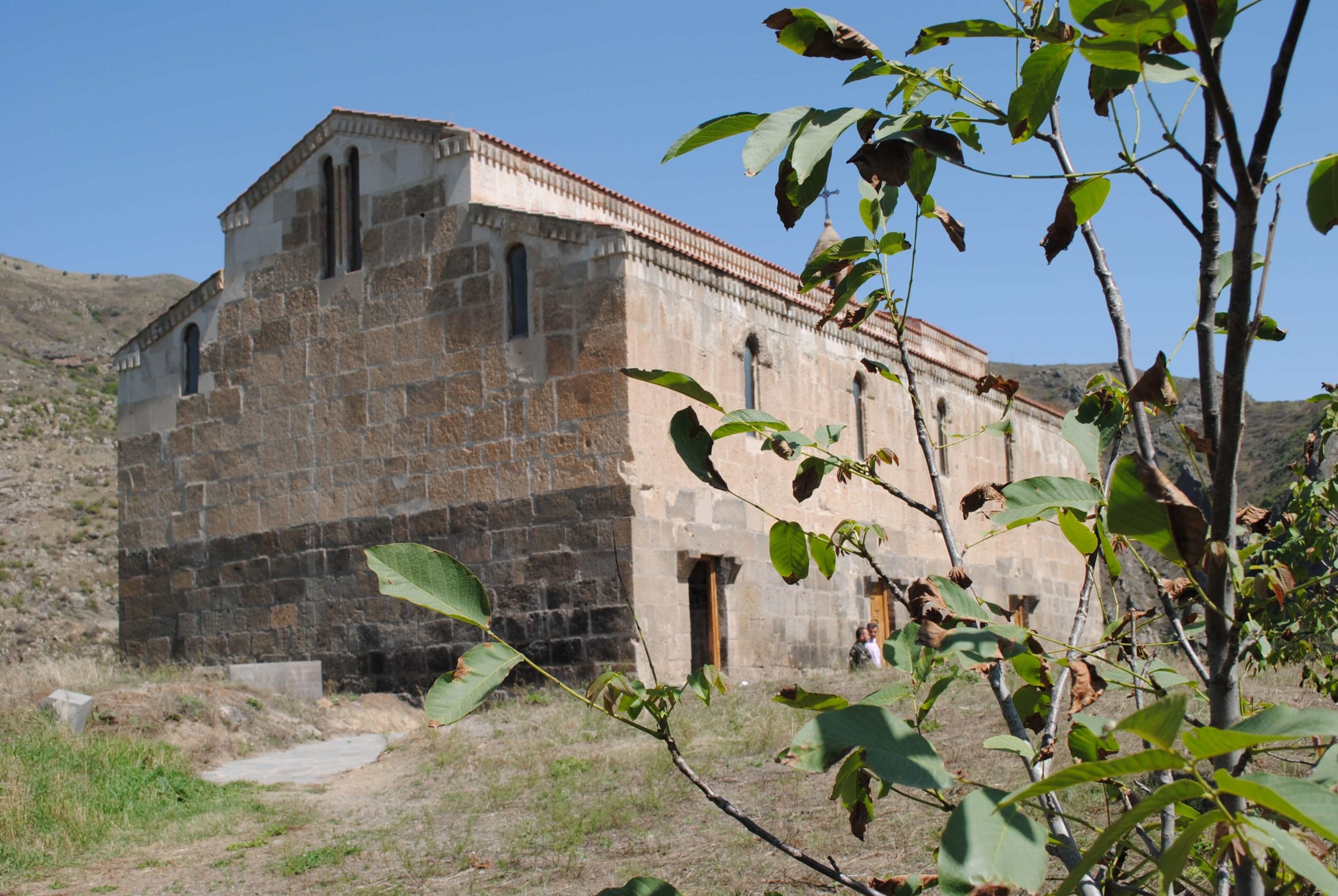A small country with Turkey to its west, Georgia to its north, and Azerbaijan to its east, Armenia is a country that boasts a rich history that spans centuries – however, Armenian history is facing a form of genocide.
However, it is now facing a form of genocide.
Armenia is one of the earliest Christian civilizations on the planet. The first Armenian churches were established around 400 AD. This was soon followed by the construction of some of the most beautiful religious sites in the world.
But after achieving independence from the Soviet Union in 1991, this amazing country quickly became drawn into a bloody civil war with Azerbaijan over territory that sits across both borders.
And Armenian churches and cultural monuments are at risk.
Enter Tsitsernavank
Tsitsernavank is an ancient monastery nestled among the mountains of the Kashatagh province of Artsakh – and it is an Armenian monument that offers a glimpse into Christianity’s distant past.
The monastery dates back to around 500 AD, only a short time after the adoption of Christianity by Armenia in 301 AD. The amazing buildings of Tsitsernavank seem to grow out of the landscape they have occupied for 1500 years.
Aided by the natural effects of the locally quarried yellow and gray stone, you cannot help but feel as if they simply belong there – even more than the mountains themselves.
While Tsitsernavank is currently unoccupied, this piece of Armenian history remained active well into the nineteenth century. As such, the site is steeped in the memory of monks dutifully tending to their daily prayers and managing their chores for well over a thousand years.
The layers of Armenian history are palpable – and once you enter the site through a seventeenth-century gate, you immediately find yourself transported back in time, to the dawn of Christianity itself.
The cultural context of Tsitsernavank
Something that cannot be undersold is the cultural significance of Tsitsernavank.
It was once an integral part of a vibrant monastic community that spanned the entirety of southern Armenia. These monasteries formed a complex intellectual and spiritual network that cannot be compared to anything we have in modern day.
Written sources spanning the entire medieval period highlight the importance of Tsitsernavank to neighboring monasteries, where it was a hub of trade, community integration, and spiritual interactions.
Yet today, despite Tsitsernavank sitting from a mere 5km from the Armenian border, it is under the control of the Republic of Azerbaijan, isolated and inaccessible to the neighboring communities that once formed its rich social network.
However, despite its isolation, Tsitsernavank remains an impressive monument to the millennia of Armenian monasticism in Artsakh.
The Truly Ancient Architecture of Tsitsernavank
The main church at Tsitsernavank is the oldest and best-preserved building at the site.
Built sometime in the fifth century, it is one of the earliest Christian monuments still standing in the world. In comparison, the building of Notre Dame in Paris started in 1163 – more than 600 years after Tsitsernavank was built.
Put another way, Tsitsernavank is closer to the time of Christ than it is to Notre Dame of Paris…
Tsitsernavank is a rectangular building, sitting on an east-west axis that is terminated in a semi-circular altar. More specifically, the church is a three-aisled basilica, which is one of the most common layouts for early Christian buildings.
Because this amazing building was built in tandem with many from Ancient Rome, its architectural form relies heavily on Imperial Roman architecture. However, the way in which it is combined with the emergence of a unique Armenian architectural style, and the way it blends with the surrounding Armenian landscape, is truly breathtaking.
In fact, as a point of difference to many Christian developments of that era, the smooth, flat walls of Tsitsernavank conceal the inner alter. As such, its emphasis on pure geometrical forms on the exterior later became the hallmark of Armenian church construction.
The Inner Beauty of Tsitsernavank
The interior of the church is less austere than the exterior, where it is full of various architectural forms and decoration to capture your attention.
The high vaulted ceiling draws the eye upward to the impressive height of the interior – something that is not immediately evident from outside. Beneath the vault, soaring arcades separate the central nave from the side aisles. The capitals of the columns beneath the arches contain geometric and interlaced decoration, each unique. Additional relief sculptures ornament the walls and column shafts, including interlace and floral designs, and even an Armenian dragon.
To the east, the alter is covered by a semi-dome, where you can see traces of frescos. While few remnants of these survive, you can make out the faint outlines of figures, alluding to the former colorful splendor of Tsitsernavank’ s prime.
Given the age of the church, it is incredibly impressive that any fragments of decoration remain – making I no surprise that it is widely regarded as one of the most sacred and beautiful cultural monuments of all of Armenia.
What does “Tsitsernavank” mean?
The name “Tsitsernavank” is believed to even predate Christianity, suggesting an earlier religious significance of the site.
